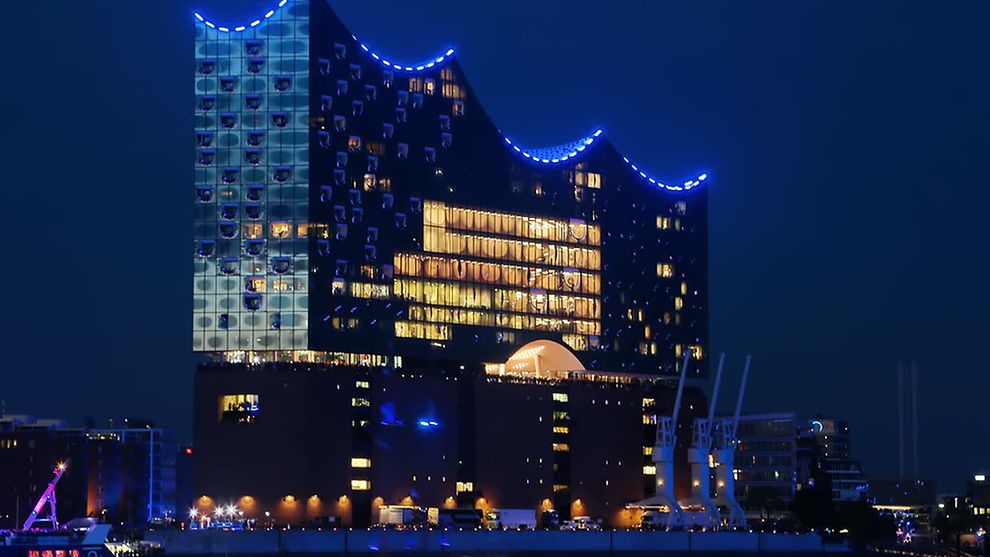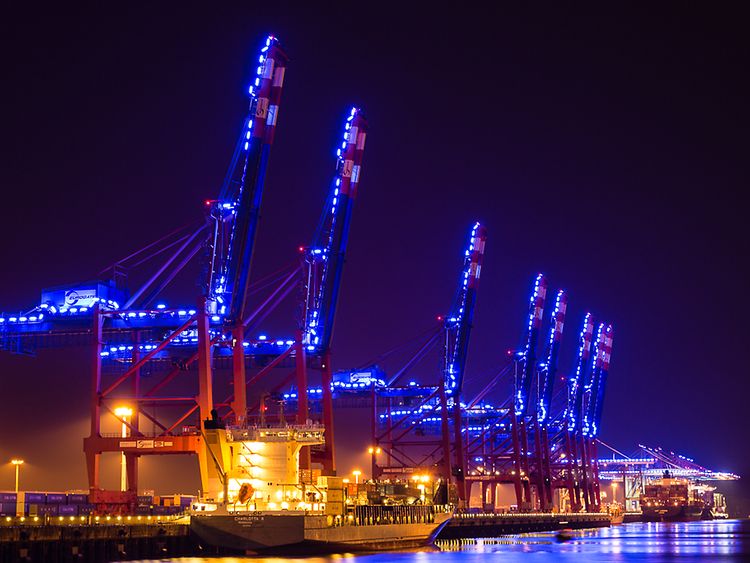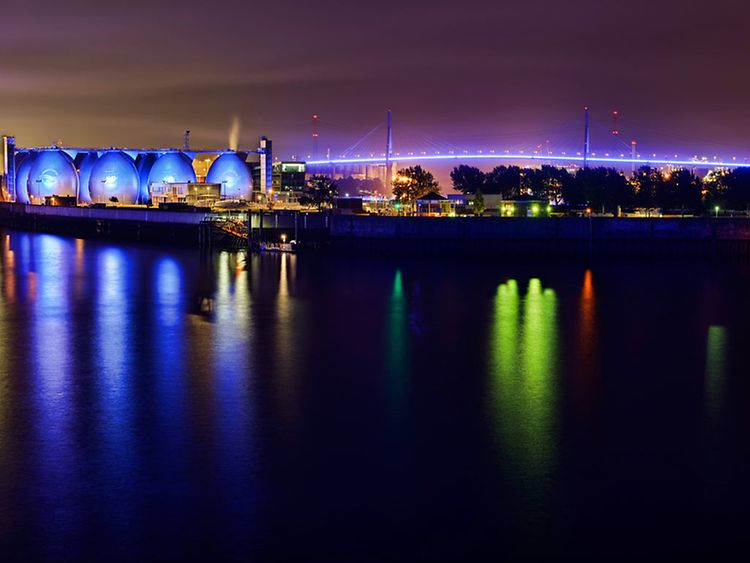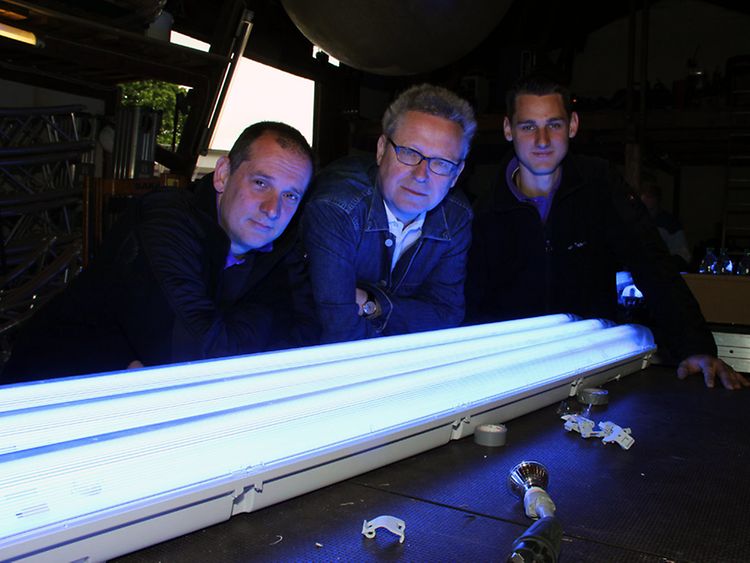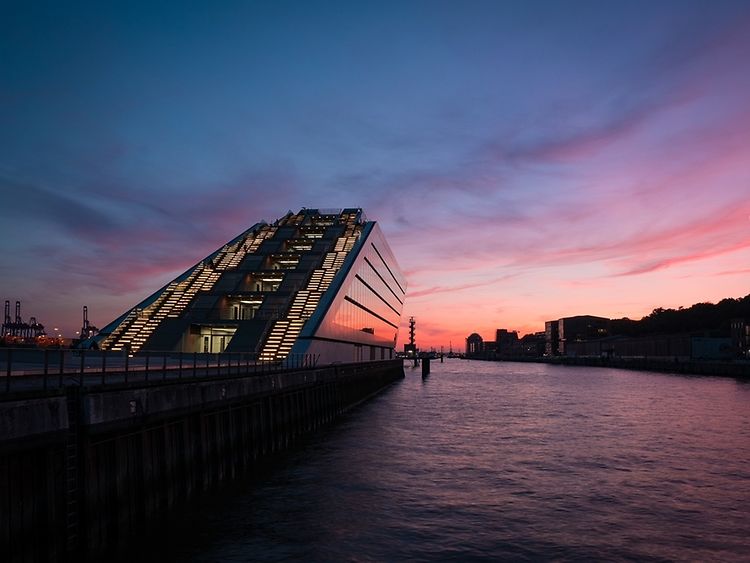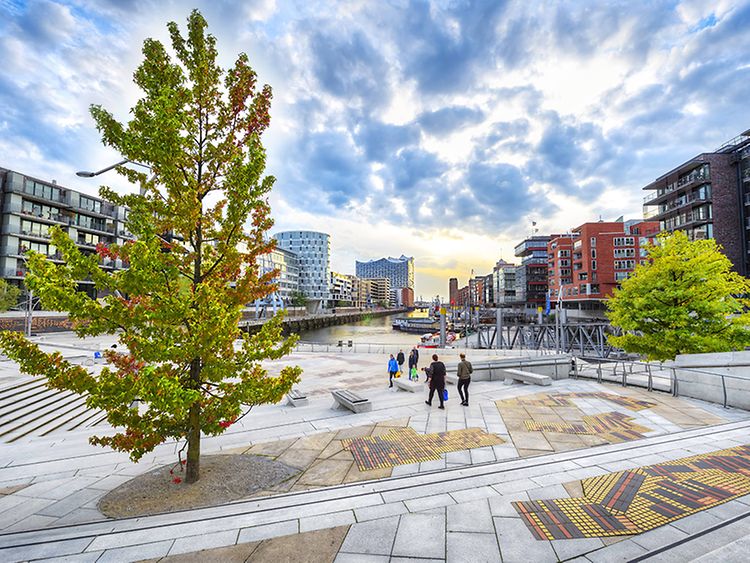Michael Batz and his Blue Port Hamburg project are known internationally to an audience far beyond the borders of Hamburg. Hamburg.de spoke to the light artist about working at night, alienation effects and, of course, the colour blue.
What highlights can visitors look forward to at Blue Port Hamburg?
'This year we will equip Euro Gate Van Carrier with blue light. Van carriers are spider-like vehicles that can each carry a container, and we're going to light up 120 of these vehicles. It was not easy to get permission for this, as the carriers are being worked on under high pressure and they sometimes transport horrendous values. Still, it just makes for a beautiful sight as they make their rounds through the harbour.'
How do the port workers react when they see the finished Blue Port Hamburg results for the first time?
'They are suddenly proud of their workplace again, take photos and surprise me with walls full of photos in their site trailers, offices and workshops. The main plant of a company is located in Johannesburg, for example, and in its reception hall there are now pictures of Blue Port Hamburg that the workers shot here in Hamburg. That makes them very proud, of course, and me too. The people who come here to work every day suddenly see the port – their workplace – with different eyes.'
How else do the people in the port get involved in your Blue Port Hamburg project?
'Unikai, a terminal of HHLA, gets a twelve-metre double H from the local employees. It will glow blue at the head of the quay where the large Grimaldi ships dock. The ArcelorMittal steelworks is also involved by making old sea marks, as they used to be used in ports, and bringing them to exposed places in the port, shimmering blue. They aren't actually made anymore these days, but despite their size and a few tons of weight they have something figurative about them. Thanks to GPS, you don't actually need them anymore, but these ancient giants get a stage again at the Blue Port.'
What kind of exciting stories happen behind the scenes during the Blue Port Hamburg construction?
'It is as exciting as it is exhausting, and we usually only have small time windows to intervene in ongoing operations. For example, if we illuminate the entire length of the Koehlbrand Bridge, a complete lane will be closed for us, but only for four hours. This means that we have to unload and lash down lamps with a truck full of lamps and behind it a sprinter full of helpers. Most of the work has to be done at night anyway, as it's busier during the day.'
Why blue?
'It is the color that is least found in nature, at least in the mineral realm. Painters used to have to shell out a lot to get blue, and it's still a very valuable colour. It has something maritime, sky and sea are both blue. It is the color of the 20th century and its protagonists. From Yves Klein to Picasso to the Blue Rider. There are also very practical reasons: It's the only chance of asserting yourself against the yellow and white operating lights, and red and green are of course taboo. Depending on the frequency, blue is also a very pleasant colour, which, according to Goethe's colour theory, stimulates, but does not aggressively penetrate, but rather has a lasting effect. Blue has a short wavelength and the highest energy, the highest increase, but in perception it radiates calm and serenity.'
Do the people of Hamburg perceive their port differently thanks to Blue Port Hamburg?
'Your own city is the foreign city, you only recognize it when you show it to others. A little alienation can make you suddenly receptive to what is happening in front of your eyes. You just have to be careful not to alienate too much. Figuratively, I can only go through it once with an axe, after that I only have rubble. I can make subtle changes more often and thus give the people of Hamburg their port back, because they are conscious of it again and learn to appreciate its beauty.'
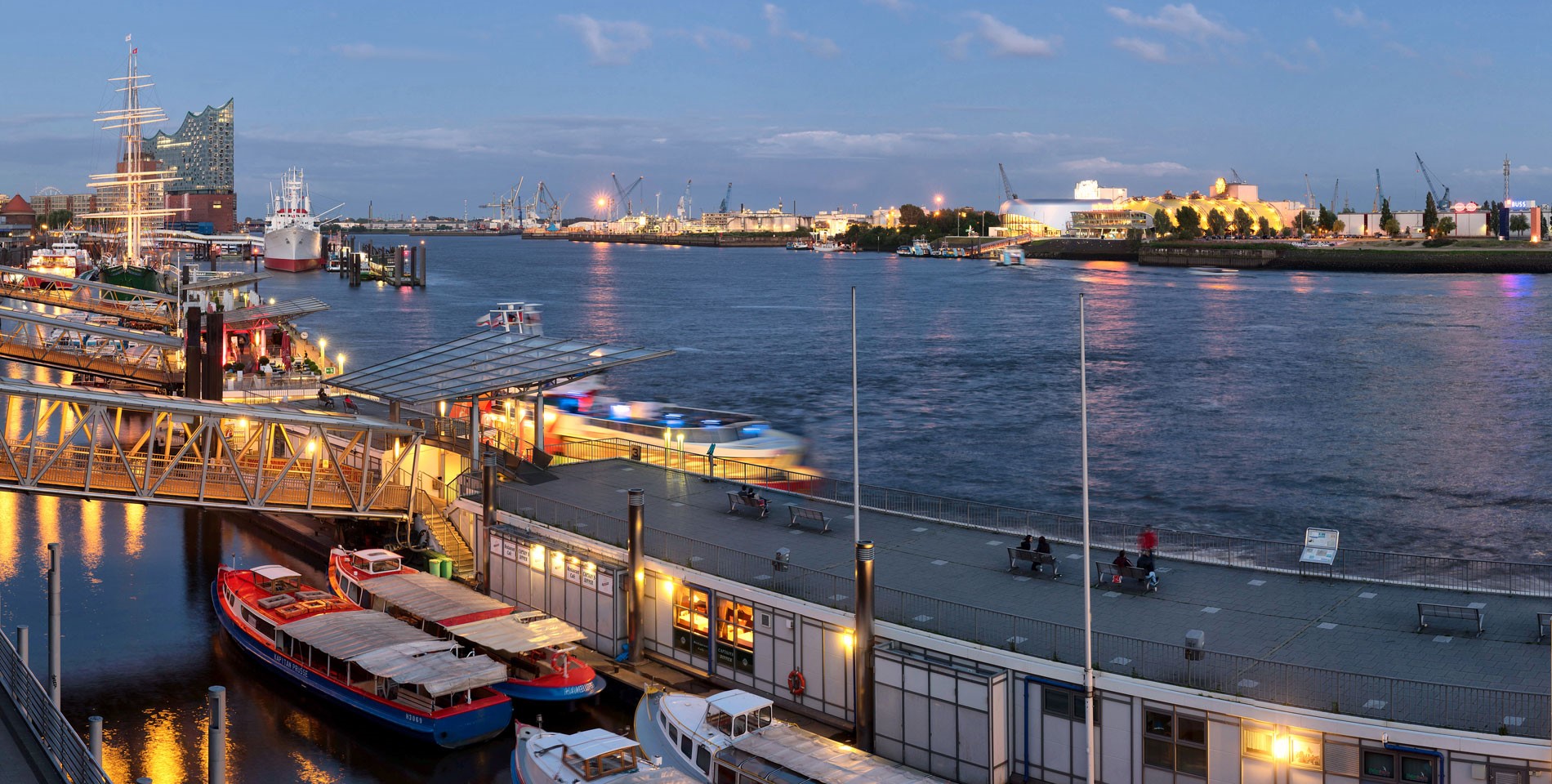
.jpg)
